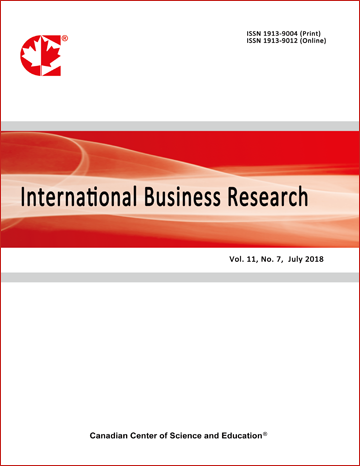Use of Social Networking Sites for Recruiting and Selecting in the Hiring Process
- Marysol Villeda
- Randy McCamey
Abstract
Business’ departments are already taking advantage of the convenience of technology, while global competition continues to demand creativity in terms of how employers acquire human capital. Thus leading to the question, how can employers take full advantage of technology in the hiring process? For instance, social networking sites (SNS) are being explored as an additional tool for recruiting and selecting the best-suited employees. Even though all types of businesses are taking the initiative to attempt the integration of SNS into their hiring process, many may still lack understanding on how candidate experience influences employer brand image, in addition to its actual benefits and risks. Through the analysis of peer-reviewed journals and other reliable sources concerning the effect of SNS on recruiting and selecting employees, we have found many benefits in the recruiting process, while SNS used in the selecting process could bring further challenges to employers. For instance, lower cost and time per hired employee, ability to reach a high number of possible applicant especially younger generations, ability to attract passive job applicants, and the inclusion of a supplementary method for employee performance predictions are the most important benefits SNS presents to the overall hiring process. On the contrary, legal issues, inability to attract a diverse pool of candidates, the lack of reliability and validity of such platforms, and the overall accuracy of information obtained are risks and pitfalls of the combination of SNS and the hiring process. After examination, we conclude that SNS should be used in recruiting and selecting of employees, but employers should not solely rely on such platforms. Employers greatly benefit from the unbiased information concerning SNS, but as time progresses and processes evolve, further research is always needed in order to reinforce or challenge earlier findings.
- Full Text:
 PDF
PDF
- DOI:10.5539/ibr.v12n3p66
Journal Metrics
h-index (January 2024): 102
i10-index (January 2024): 947
h5-index (January 2024): N/A
h5-median(January 2024): N/A
( The data was calculated based on Google Scholar Citations. Click Here to Learn More. )
Index
- Academic Journals Database
- ACNP
- ANVUR (Italian National Agency for the Evaluation of Universities and Research Institutes)
- CNKI Scholar
- COPAC
- CrossRef
- EBSCOhost
- EconBiz
- ECONIS
- EconPapers
- Elektronische Zeitschriftenbibliothek (EZB)
- EuroPub Database
- Excellence in Research for Australia (ERA)
- Genamics JournalSeek
- Google Scholar
- Harvard Library
- IBZ Online
- IDEAS
- Infotrieve
- Kobson
- LOCKSS
- Mendeley
- MIAR
- Norwegian Centre for Research Data (NSD)
- PKP Open Archives Harvester
- Publons
- Qualis/CAPES
- RePEc
- ResearchGate
- ROAD
- Scilit
- SHERPA/RoMEO
- SocioRePEc
- Technische Informationsbibliothek (TIB)
- The Keepers Registry
- UCR Library
- Universe Digital Library
- ZBW-German National Library of Economics
- Zeitschriften Daten Bank (ZDB)
Contact
- Kevin DuranEditorial Assistant
- ibr@ccsenet.org
